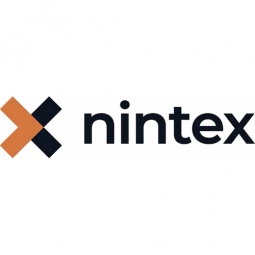Technology Category
- Cybersecurity & Privacy - Security Compliance
- Sensors - Utility Meters
Applicable Industries
- Buildings
- Cities & Municipalities
Applicable Functions
- Logistics & Transportation
- Quality Assurance
Use Cases
- Intelligent Urban Water Supply Management
- Visual Quality Detection
Services
- Testing & Certification
- Training
About The Customer
Christchurch City Council is a local government organization based in New Zealand. The council is responsible for providing a wide range of community services to the residents of Christchurch. These services include maintaining local parks, collecting property taxes, and managing the city's water supply. The council employs over 2800 staff who work behind the scenes to deliver these services. The council is currently undergoing a modern workplace initiative, partly driven by the change in working conditions resulting from the COVID-19 pandemic. The council is focused on improving its processes to provide staff with an environment that reflects how people want to work and to deliver quality outcomes to the community.
The Challenge
Christchurch City Council, a local government body in New Zealand, was undergoing a transformation initiative with a focus on moving to the cloud as part of a modern workplace initiative. The council, with over 2800 staff, provides a wide range of community services, from maintaining local parks to managing water supply. However, the council faced challenges with manual and outdated processes, lack of process documentation, and risk of losing institutional knowledge due to staff turnover. These issues posed a risk to the quality of service delivery and the retention of critical organizational knowledge. The COVID-19 pandemic further accelerated the need for a modern work environment that could adapt to changing working conditions.
The Solution
To address these challenges, the council implemented a process management solution that allowed teams with statutory requirements, risk, and compliance regulations to document and automate their processes. This resulted in less manual work, more accurate results, and improved training and onboarding. The council also introduced dashboards to visually report information, providing immediate value by reducing risk and ensuring consistent service delivery. The council also focused on building a process culture, with teams documenting their day-to-day tasks and optimizing work where necessary. The council also implemented digital forms and processes for field workers, replacing manual documents and enabling real-time updates. The council's process mapping tool, Nintex Process Manager, played a crucial role in this transformation.
Operational Impact
Quantitative Benefit

Case Study missing?
Start adding your own!
Register with your work email and create a new case study profile for your business.
Related Case Studies.

Case Study
Turning A Stadium Into A Smart Building
Honeywell created what it called the “intelligent system” for the National Stadium in Beijing, China, turning the venue for the opening and closing events at the 2008 Summer Olympics into a “smart building.” Designed by highly controversial artist Ai Weiwei, the “Bird’s Nest” remains one of the most impressive feats of stadium architecture in the world. The 250,000 square meter structure housed more than 100,000 athletes and spectators at a time. To accommodate such capacity, China turned to Honeywell’s EBI Integrated Building Management System to create an integrated “intelligent system” for improved building security, safety and energy efficiency.

Case Study
Energy Saving & Power Monitoring System
Recently a university in Taiwan was experiencing dramatic power usage increases due to its growing number of campus buildings and students. Aiming to analyze their power consumption and increase their power efficiency across 52 buildings, the university wanted to build a power management system utilizing web-based hardware and software. With these goals in mind, they contacted Advantech to help them develop their system and provide them with the means to save energy in the years to come.
.png)
Case Study
Smart Street Light Network (Copenhagen)
Key stakeholders are taking a comprehensive approach to rethinking smart city innovation. City leaders have collaborated through partnerships involving government, research institutions and solution providers. The Copenhagen Solutions Lab is one of the leading organizations at the forefront of this movement. By bringing together manufacturers with municipal buyers, the Copenhagen Solutions Lab has catalyzed the development and deployment of next-generation smart city innovations. Copenhagen is leveraging this unique approach to accelerate the implementation of smart city solutions. One of the primary focus areas is LED street lighting.

Case Study
Buoy Status Monitoring with LoRa
The Netherlands are well-known for their inland waterways, canals, sluices and of course port activities. The Dutch Ministry of Infrastructure indicates that there are thousands of buoys and fixed items in and near water environments that would profit from IoT monitoring. One of the problems with buoys for example, is that they get hit by ships and the anchor cable breaks. Without connectivity, it takes quite some time to find out that something has happened with that buoy. Not to mention the costs of renting a boat to go to the buoy to fix it. Another important issue, is that there is no real-time monitoring of the buoys at this moment. Only by physically visiting the object on the water, one gains insight in its status.

Case Study
Barcelona Case Study
Barcelona’s heavy traffic and its associated high levels of pollution were the primary factors that motivated some companies and universities to work on strategies for improving traffic in the city centre. Bitcarrier is one of the technologies involved in the In4Mo Project, whose main objective is to develop the applications that form the core of smart mobility, one of the fundamental pillars of the smart city concept.








